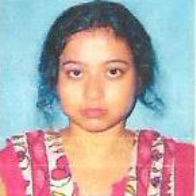International Journal of Information Technology and Computer Science (IJITCS)
IJITCS Vol. 7, No. 5, 8 Apr. 2015
Cover page and Table of Contents: PDF (size: 442KB)
A Comparative Study on the Performance of Fuzzy Rule Base and Artificial Neural Network towards Classification of Yeast Data
Full Text (PDF, 442KB), PP.40-47
Views: 0 Downloads: 0
Author(s)
Index Terms
Protein Localization, Classification, Neural Network, Fuzzy Rule Base, Yeast Dataset
Abstract
Classification of yeast data plays an important role in the formation of medicines and in various chemical components. If the type of yeast can be recognized at the primary stage based on the initial characteristics of it, a lot of technical procedure can be avoided in the preparation of chemical and medical products. In this paper, the performance two classifying methodologies namely artificial neural network and fuzzy rule base has been compared, for the classification of proteins. The objective of this work is to classify the protein using the selected classifying methodology into their respective cellular localization sites based on their amino acid sequences. The yeast dataset has been chosen from UCI machine learning repository which has been used for this purpose. The results have shown that the classification using artificial neural network gives better prediction than that of fuzzy rule base on the basis of average error.
Cite This Paper
Shrayasi Datta, J. Paulchoudhury, "A Comparative Study on the Performance of Fuzzy Rule Base and Artificial Neural Network towards Classification of Yeast Data", International Journal of Information Technology and Computer Science(IJITCS), vol.7, no.5, pp.40-47, 2015. DOI:10.5815/ijitcs.2015.05.06
Reference
[1]B. Alberts, D. Bray, J. Lewis, M. Raff, K. Roberts, J.D. Watson, Molecular Biology of the Cell, Garland, New York, 1994.
[2]H. Lodish, D. Baltimore, A. Berk, S.L. Zipursky, P. Matsudaira, J. Darnell, Molecular Cell Biology, Scientific American Books, New York, 1995
[3]Z.-P. Feng, An overview on predicting the subcellular location of a protein, Silico. Biol. 2 (3) (2002) page 291–303.
[4]Q. Cui, T. Jiang, B. Liu, S. Ma, Esub8: a novel tool to predict protein subcellular localizations in eukaryotic organisms, BMC Bioinformatics 5 (1) (2004) 1–7.
[5]Shavlik, J., Hunter, L. & Searls, D. (1995).Introduction. Machine Learning, 21: 5-10.
[6]Nakai and Kanehisa . 1991.”Expert system for predicting protein localization sites in gram negative bacteria”,PROTEINS,structure,function and genetics,11:95-110.
[7]Nakai and Kanehisa 1992, A knowledge base for predicting protein localization sites in eukaryotic cells.Genomics, 14:897-911.
[8]Horton and Nakai,1996:A probabilistic classification system for predicting of cellular localization of sites of protein.In Proceedings of Fourth International Conference on Intelligent Systems for Molecullar Biology.109-115.St. Louis.AAAI Press.
[9]Paul Horton , Kenta Nakai, “Better Prediction of Protein Cellular Localization Sites with the it k Nearest Neighbors Classifier”, Proceedings of the 5th International Conference on Intelligent Systems for Molecular Biology, p.147-152, June 21-26, 1997
[10]Yetian Chen, Predicting the Cellular Localization Sites of Proteins Using Decision Tree and Neural Networks, http://www.cs.iastate.edu/~yetianc/cs572/files/CS572_Project_YETIANCHEN.pdf.unpublished.
[11]Qasim, R, Begum, K. ; Jahan, N. ; Ashrafi, T. ; Idris, S. ; Rahman, R.M.:” Subcellular localization of proteins using automated fuzzy inference system”, published at Informatics, Electronics & Vision (ICIEV), 2013 International Conference on May 2013,pages 1-5
[12]Support Vector Machine with the Fuzzy Hybrid Kernel for Protein Subcellular Localization Classification “;Bo Jin, Yuchun Tang, Yan-Qing Zhang, Chung-Dar Lu and Irene Weber; The 2005 IEEE International Conference on Fuzzy Systems;pages 420-423.
[13]X.-B. Zhou, C. Chen, Z.-C. Li, and X.-Y. Zou;”Improved prediction of subcellular location for apoptosis proteins by the dual-layer support vector machine”; Amino Acids (2008) 35: 383–388.
[14]Ana Carolina Lorena, André C.P.L.F. de Carvalho:”Protein cellular localization prediction with SupportVector Machines and Decision Trees”; Computers in Biology and Medicine 37 (2007) 115 – 125.
[15]Jing Huang and Feng Shi, “support vector machines for predicting apoptosis proteins types”; Acta Biotheoretica (2005) 53: 39–47; Springer 2005.
[16]Ru-Ping Liang, Shu-Yun Huang, Shao-Ping Shi, Xing-Yu Sun, Sheng-Bao Suo, Jian-Ding Qiu:” A novel algorithm combining support vector machine with the discrete wavelet transform for the prediction of protein subcellular localization”; Computers in Biology and Medicine 42 (2012) 180–187.
[17]K.C. Chou and H.B. Shen, “Euk-Mploc: A Fusion Classifier for Large-Scale Eukaryotic Protein Subcellular Location Prediction by Incorporating Multiple Sites,” J. Proteome Research, vol. 6, no. 5, pp. 1728-1734, 2007.
[18]H.B. Shen and K.C. Chou, “Nuc-Ploc: A New Web-Server for Predicting Protein Subnuclear Localization by Fusing Pseaa Composition and Psepssm,” Protein Eng. Design and Selection,vol. 20, no. 11, pp. 561-567, 2007.
[19]K.C. Chou and H.B. Shen, “Large-Scale Plant Protein Subcellular Location Prediction,” J. Cellular Biochemistry, vol. 100, no. 3, pp. 665-678, 2007.
[20]H.B. Shen and K.C. Chou, “Gpos-Ploc: An Ensemble Classifier for Predicting Subcellular Localization of Gram-Positive Bacterial Proteins,” Protein Eng. Design Selection, vol. 20, no. 1, pp. 39-46, 2007.
[21]P.S. Banerjee, J.Palchoudhury, S.R. Bhadra Choudhury, “Fuzzy membership function as a Trust Based AODV for MANET”, I.J. Computer Network and Information Security,2013,12,27-34.
[22]M. Barman, J Palchoudhury, S. Biswas,”A Framework for the Neuro Fuzzy Rule Base System in the diagonosis of heart disease”, International journal of Scientific and Engineering Research,vol-4,Issue 11,November 2013.
[23]M. Barman, J Palchoudhury, “A Framework for Selection of Membership Function Using Fuzzy Rule Base System for the Diagnosis of Heart Disease”,I.J. Information Technology and Computer Science, vol 5, no. 11,October 2013,pages 62-70..
[24]UCI machine learning repository,: http://archive.ics.uci.edu/ml.

